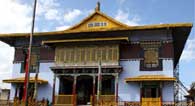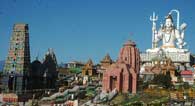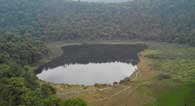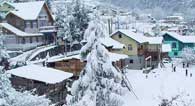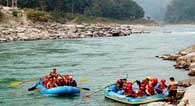CONTACT US
Church Road, Near Pelling Taxi stand, Gangtok-737101, Sikkim, India
Phone no.
+91-9832564013, 03592-206888, 9002069916, 9933448360.
Email : sikkim444@gmail.com
Mountaineering
The first European to explore Khangchendzonga area won Douglas W.Freshfield in 1899. Famous Sikkimese Everester Sonam Gyatso climbed the summit of Sinolchu. Though mountaineering activities now a day is not frequent yet the activities is usually taken by Sonam Gyatso Mountaineering Institute.
The Sikkim Himalayas, the epitome of the world's mountains, encompass a wonderland, which for sheer beauty and magnificence remains unbeaten elsewhere in the globe. In the southwestern part of Sikkim, in the main Himalayan range, lies the majestic Khangchendzonga or Kanchenjunga, rising to a staggering height of 8,585 m (28,169 ft) above sea level. Beside this third largest peaks, other famous mountaineering peaks in
Sikkim include- Kabru, Kirat Chulior Tent Peak (7,365 m) and Sinolchu (6,887 m). Mountaineering expeditions, unlike trekking, require more planning and paperwork as clearance is required from the Indian Mountaineering Foundation, New Delhi. Besides these the local governments also impose royalties on certain peaks.
Little History:
The first European to explore the Khangchendzonga area was Douglas W. Freshfield who reached its base in 1899 from the Green Lake Basin area. A German expedition led by Paul Bauer made the first attempt to reach the summit in 1929 followed by another attempt in 1931 and reached an altitude of 26,000 ft. In 1955 Charles Evans conquered Khangchendzonga a few feet below the summit from the Nepal side. In 1977 an expedition led by Major Prem Chand reached a few feet below the summit. In 1987 an Assam Rifles expedition attempted the peak. In 1991 an Indo Japanese expedition led by Hukam Singh and Yoshio Ogata conquered the peak.
The Kabru was first climbed in 1935 by a British C.R. Cooke. The pyramid Peak was first conquered in 1949 by a Swiss R. Dittert. A British A.M. Kallas, climbed the Paunhri in 1911. The summit of Siniolchu was first reached by a German in 1936. It was later again climbed by the famous Sikkimese Everester Sonam Gyatso. Pandim was climbed in 1993 by a team from the Sonam Gyatso Mountaineering Institute. Rathong was conquered by an Indian expedition in 1964.
Khangchendzonga (8585 mtrs/ 28,146 ft) is considered the Guardian Deity of Sikkim. For sentimental, religious and other environmental reasons, permission is not granted by the Sikkim government is to scale the peak. Rathong (22,000 ft.) has some of the open peaks though they require special permits. The best known peaks in Sikkim - Talung, Jonsong and Tent are all above 24,000 feet.
The amount mentioned below has to be paid in Gangtok, Sikkim, after the permit is granted by the Indian Mountaineering Foundation, New Delhi.
Essentials:
The best season to climb in Sikkim is from May to October. Foreign expeditions have to book a peak along with a peak fee. The Indian Mountaineering Foundation(IMF) is the country's apex body that helps in organising/ sponsoring mountaineering expeditions. It is mandatory for Expeditions in Sikkim to take a liason officer from the Sikkim Mountaineering Association along with the liason officer from the Indian Mountaineering Foundation. IMF functions as a clearing house for foreign expeditions and deputes a liasion officer to accompany foreign climbers. All requests have to be forwarded to IMF for clearance.
It is advisable to give atleast a six month's notice before embarking on an expedition. All emergencies and accidents are looked after by the liasion officer who helps to get rescue from the Indian Air Force.





